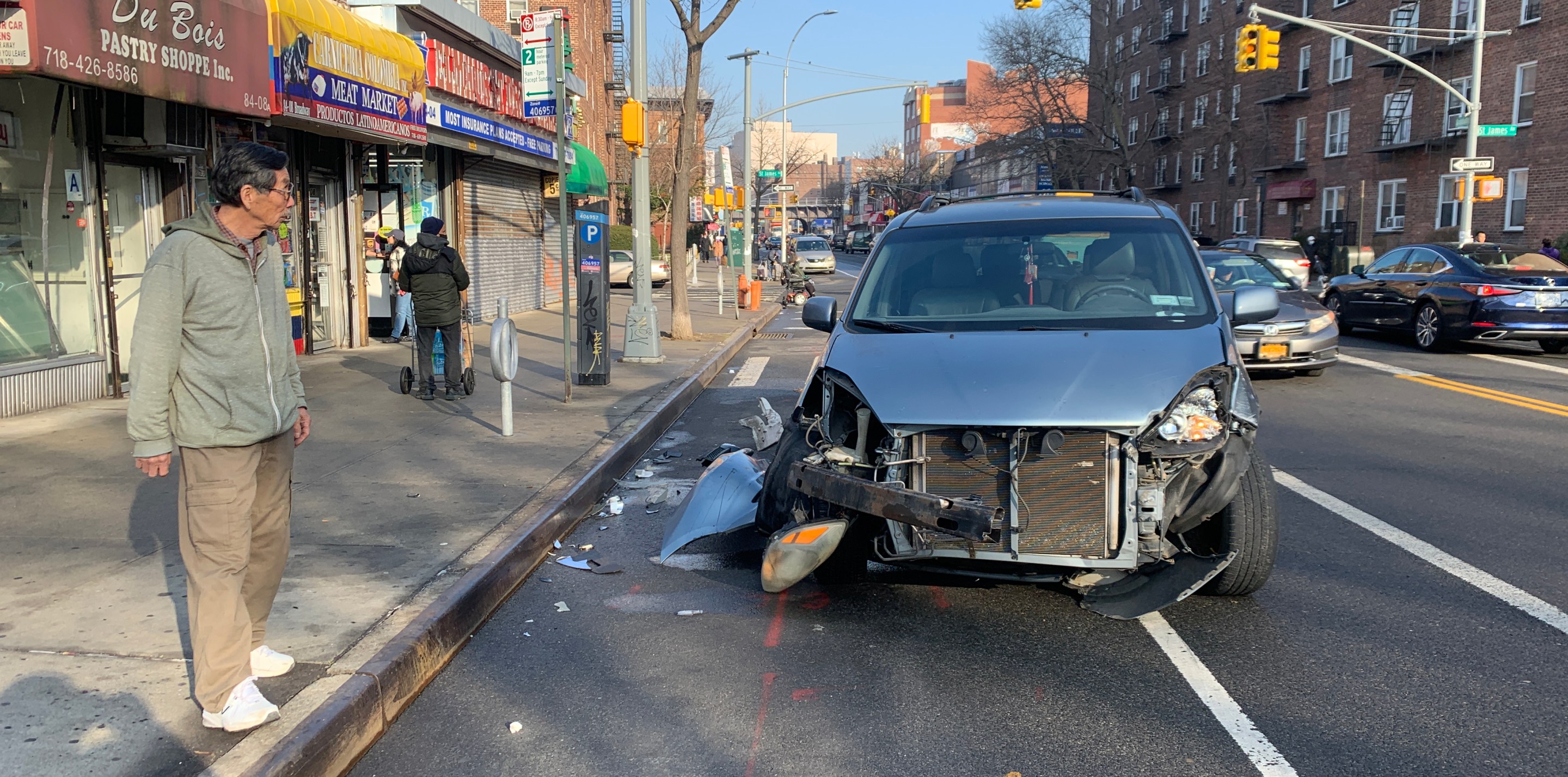Protected bike lanes have reduced traffic deaths and serious injuries by 18 percent.
New York City Department of Transportation, Vision Zero website
A mayoral administration that has failed to build the legally required protected bike lane mileage for two consecutive years now must confront some hardly shocking news: 60 people died on New York City roadways in the first quarter of 2024 — the most in the first three months of any year since Vision Zero began in 2014.
The gruesome data, crunched by Transportation Alternatives and released on Thursday, reveal that those 60 deaths are 50 percent more than the first quarter of 2018, which was the safest opening three months of any Vision Zero year.
The bloody news is partly driven by an increase in motorist deaths — with 26 drivers or people in vehicles dying, which is 63 percent higher than the average first quarter since Vision Zero started.
“Today’s numbers should be a sobering call to action for the Adams administration,” Transportation Alternatives Executive Director Danny Harris said in a statement. “It is unconscionable that this is the deadliest first quarter under Vision Zero, a whole decade after the program first launched. New Yorkers don't need any more platitudes, they need and deserve real action from their leaders. Every single one of these deaths was preventable, and we need New York City to finally meet the legal mandates of the Streets Plan to save lives. Whether you’re in a car, walking, biking, or taking transit, everyone should be able to survive just traveling throughout the five boroughs."
Harris intentionally put the focus on all modes of transportation, as the report laid out grim numbers beyond the high number of motorists' deaths:
- Twice as many bike riders were killed during the first three months of 2024 than during the average Vision Zero first quarter. The only good news is that the numbers were down slightly from the worst first quarter, which was last year, which went on to become the deadliest year for six bike riders since 1999. It's telling that none of the bike riders killed so far this year were in a protected bike lane, and 83 percent were biking on streets without any bike safety infrastructure.
- In the first quarter of 2024, 21 pedestrians and four cyclists were struck and killed by SUVs and other large vehicles, representing 79 percent of the 34 people killed while walking, biking, or riding mopeds. Zero pedestrians were killed by cyclists or moped riders.
- The city's failure to clear intersections of parked cars is undermining safety: Of the pedestrians killed at intersections (the most common place), 89 percent of those intersections had no daylighting measures, the report showed. And none of those intersections had physical daylighting to stop drivers from parking all the way to the crosswalk. New York City exempts itself from state law requiring a ban on parking near intersections.
The fatalities come as the Adams administration continues to be criticized by street safety advocates for failing to construct the required mileage of protected bike and bus lanes in its first two years. Under the Streets Plan, the Adams DOT was required in its first two years to build 80 miles of protected bike lane (it built 58.2 miles, or 72 percent of the requirement) and 50 miles of protected bus lanes (it only built 9.6 miles, or 19 percent of the requirement).
Council Speaker Adrienne Adams has called for the DOT to give the Council monthly updates in hopes of getting the agency on track.
It is not as if the Adams administration is doing nothing: The Mayor has promised to daylight at least 1,000 intersections every year. And last year it did build a record number of protected bike lanes, albeit fewer than the 50 miles it was required to build.
“We grieve for the loss of any life on our streets," said agency spokesman Vin Barone. "After 2023, a year that saw near-record-low pedestrian fatalities and record-high production of protected bicycle lanes in New York City, we remain dedicated to our Vision Zero goals. Through a series of ground-breaking interventions around education, enforcement and engineering — including new daylighting at 1,000 intersections citywide — we are continuing that good work and are hopeful that we can reverse the disturbing trends so far this year.”
The agency also pointed out that the 26 motorist fatalities during the first quarter are a bit of a statistical anomaly as five people were killed in a single crash on the Cross Island Parkway on Jan. 1.






